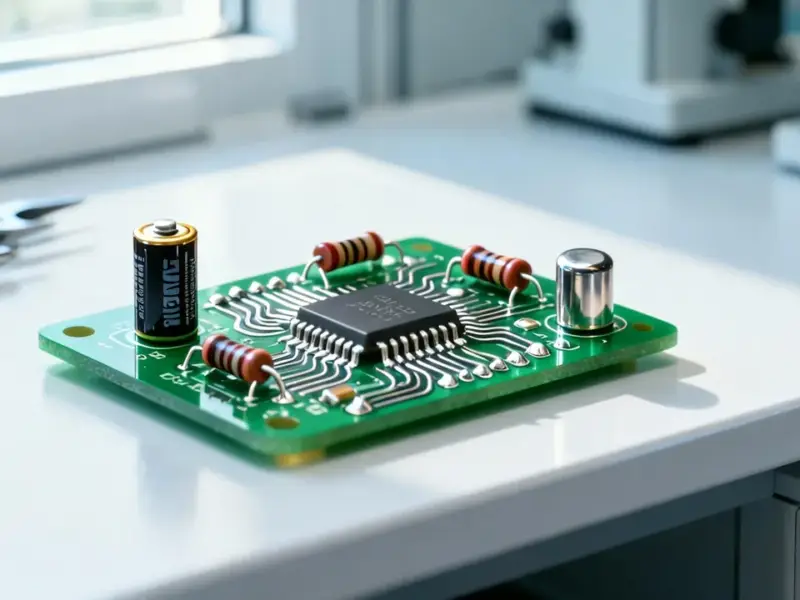According to Manufacturing.net, Trane Technologies has launched a comprehensive thermal management system reference design specifically engineered for Nvidia’s Omniverse DSX Blueprint targeting gigawatt-scale AI data centers. The new system enables data center operators to simultaneously manage power, water and land resources while supporting the advanced cooling needs of Nvidia’s GB300 NVL72 infrastructure. The design integrates with Nvidia Omniverse for digital twin simulations, building on Trane’s September announcement extending its chiller plant control facility programming for modern data centers. Nvidia Product Leader Dion Harris emphasized that “power and thermal efficiency are now foundational to next-generation AI infrastructure” for reasoning and inference workloads. This partnership signals a critical evolution in how the industry approaches AI infrastructure scaling.
The Thermal Bottleneck That Could Stall AI Progress
What makes this announcement particularly significant is the timing. We’re approaching a fundamental physical limitation in AI development where computational density is outpacing our ability to manage the resulting heat. Nvidia’s roadmap indicates rack densities will continue increasing dramatically, and traditional cooling solutions simply won’t scale to meet gigawatt-level demands. The thermal management challenge has quietly become one of the most significant bottlenecks in AI advancement, potentially more limiting than chip manufacturing capacity or energy availability. When systems generate enough heat to require industrial-scale cooling solutions, we’ve entered territory where infrastructure constraints could actually determine the pace of AI model development.
Who Wins and Who Gets Left Behind in the Cooling Revolution
This partnership creates clear winners beyond just Trane and Nvidia. Large-scale cloud providers and hyperscalers with existing infrastructure partnerships will benefit immediately from standardized reference designs that reduce deployment time and engineering costs. However, smaller AI startups and research institutions face a growing disadvantage. The capital requirements for gigawatt-scale cooling infrastructure create an increasingly high barrier to entry, potentially concentrating advanced AI development in the hands of a few well-funded players. Geographic implications are equally significant – regions with abundant water resources and cooler climates suddenly become more attractive for AI factory deployment, while water-scarce regions face additional constraints beyond just energy availability.
The Digital Twin Advantage in Infrastructure Planning
The integration with Nvidia’s Omniverse platform represents a strategic shift in how we approach massive infrastructure projects. Digital twins allow for simulation of thermal dynamics, power distribution, and cooling efficiency before breaking ground on billion-dollar facilities. This reduces the enormous financial risk associated with building AI factories that might not perform as expected. The ability to aggregate 3D data from multiple sources using OpenUSD means operators can model complex interactions between cooling systems, server layouts, and environmental factors that were previously too complex to simulate accurately.
The Coming Water vs. Power Tradeoffs
One of the most critical aspects of Trane’s approach is the simultaneous management of power, water, and land resources. As AI scales to consume multiple gigawatts per facility, the cooling solution’s water consumption becomes a major environmental and operational consideration. Traditional data center cooling can consume millions of gallons of water daily, creating conflicts with municipal water systems and environmental regulations. Trane’s expertise in industrial-scale HVAC systems positions them to develop solutions that optimize this water-power-land triangle, but the industry will need to confront difficult tradeoffs between energy efficiency, water usage, and cooling performance as AI factories proliferate.
Why Deployment Velocity Matters More Than Ever
The emphasis on faster deployment timelines reflects the breakneck pace of AI competition. Companies building AI infrastructure can’t afford the 2-3 year construction cycles typical of traditional data centers. The reference design approach standardizes components and processes, potentially cutting deployment time by months. In an environment where AI model capabilities are advancing quarterly, shaving six months off infrastructure build-out could mean the difference between leading the market and playing catch-up. This acceleration pressure will likely drive more partnerships between AI hardware companies and industrial infrastructure providers, creating new ecosystems around rapid AI factory deployment.




